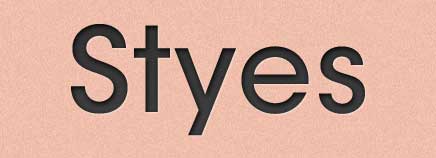
As health problems go, a stye is usually no more than a minor annoyance. If your child develops one, you can probably treat it at home.
About Styes
A stye is a red, painful bump on the eyelid, caused by a backed-up oil gland. Styes can appear on either the upper or lower eyelid, as well as the inside or the outside of the eyelid, near the edge of the eyelid where the eyelashes are.
Eyelids have lots of oil glands. They can’t be seen without a microscope, but these glands produce the liquid-like substance that helps lubricate the front of the eyes along with tears.
Sometimes, these glands can get clogged with old oil, dead skin cells, and old skin bacteria. When this happens, liquid builds up in the clogged gland and can’t get out.
The result is a little bump on the upper or lower eyelid that might look like a pimple. A stye can become infected and get very red and swollen.

Treating Styes
If your child has a stye, you’ll want to get the clogged-up oil out of it. Applying heat helps the oil become more liquid. To do this, soak a clean washcloth in warm (not hot!) water. Wring out the excess water, then place the washcloth over the eye for a few minutes. Repeat this several times a day.
You also can clean the eyelid with special eye-scrub soap (available at drugstores) or with watered-down baby shampoo, which is designed to not hurt eyes. Soak a cotton swab in the solution and use it to clean your child’s eyelid.
If your child wears contact lenses, have him or her switch to wearing glasses until the stye goes away. Clean the contacts thoroughly before your child wears them again.
If your child has pain in the eyeball or problems seeing, call your doctor. Also call if there is any swelling and redness beyond the eyelid (in the eye or other parts of the face).
If the Stye Gets Worse
The stye should begin to improve over a few days. If it doesn’t or it becomes worse, call your doctor.
The doctor may give you an antibiotic cream to use on the stye or prescribe antibiotics. In rare cases, the doctor might make a tiny cut in the eyelid to let out the clogged-up material. The doctor also will determine whether your child has something other than a stye and, if so, treat it.
Prevention
Kids who get one stye are at higher risk of getting another one. To make that less likely, your child should:
- Clean the eyelids every day or every couple of days with the diluted baby shampoo or special eye-scrub soap.
- Disinfect contact lenses according to the instructions.
- Remove all eye makeup completely before going to bed.
- Throw away mascara, liquid eyeliner, and eye shadow 3 months after first using them.
- Never share towels or washcloths with anyone who has a stye.
- Wash his or her hands often.

